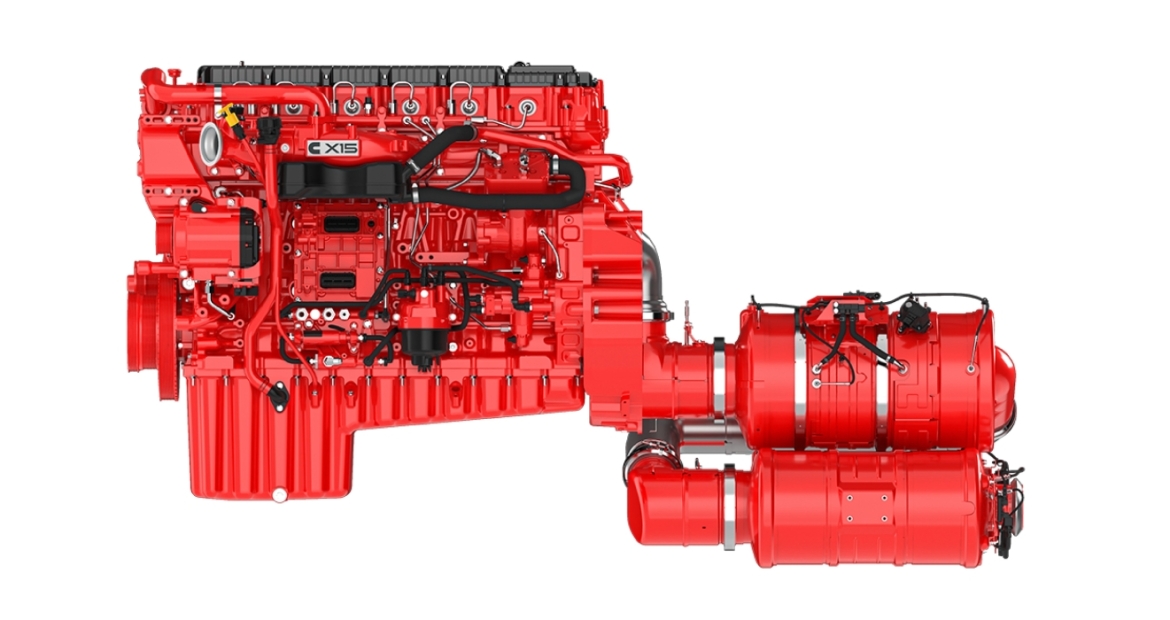Frequently asked questions on the EPA27 aftertreatment system
By Cummins Inc., Global Power Technology Leader

What's the EPA27 Twin Module Aftertreatment?
The EPA27 emissions rule requires significant reductions in nitrogen oxide (NOx) emissions for vehicles beginning with the 2027 engine model year. To meet these strict requirements, Cummins has developed the Twin Module aftertreatment system for the X10 heavy-duty and X15 engine. This system is designed to meet NOx emissions that are more than 75% lower than current regulations, while maintaining durability and efficiency.
Achieving compliance with EPA27 requires an integrated approach that optimizes both the engine and aftertreatment system. This ensures that vehicles remain efficient and reliable under real-world conditions.
Is the EPA27 Twin Module a New Aftertreatment System?
Not entirely.
The Twin Module aftertreatment system builds upon a proven foundation. It maintains the DOC-DPF-SCR catalyst architecture with single DEF injection - features that Cummins customers have relied on since 2010.
However, to meet the more stringent regulations, the system is now larger and implements an electric heating system. To accommodate this increase in size, it has been divided into two separate assemblies: a DPF Assembly and an SCR assembly. This change does add weight to the aftertreatment - however, at a system level with the engine, it is weight neutral compared to EPA24 X15 systems.
Additionally, the design ensures that the DPF service intervals remain unchanged despite the increased stringency of Particulate Matter regulations and extended useful life requirements.
Does the EPA27 X15 Weigh More Due to the Aftertreatment System?
Since the Twin Module system is larger, it does add weight. However, Cummins has made improvements to the 2027 X15 engine that offset this increase.
As a result, the overall weight of the engine and aftertreatment system remains neutral, ensuring that tighter emissions regulations do not require fleets to sacrifice payload capacity.
Is the EPA27 Aftertreatment System Customizable?
Sí.
Cummins has designed the system with flexibility in mind, allowing customers to choose configurations that best fit their vehicles. For example, customers can select from multiple inlet, outlet, and connection options so they can customize the system to integrate seamlessly with their chassis.
Why Does the EPA27 SCR Assembly Have Two Catalysts?
The SCR Assembly utilizes a parallel flow design for three primary reasons:
- Lower backpressure: Exhaust restrictions negatively affect fuel economy. By splitting the exhaust flow into two parallel paths instead of one long path, backpressure is reduced by 44% compared to today’s Heavy-Duty system of the same volume.
- Compact design: Meeting EPA27 standards with a single-module SCR system would require an increase in overall length. If Cummins had extended a single SCR system without implementing a parallel flow, it would have been approximately one foot longer. The Twin Module design avoids excessive size while still achieving compliance.
- Thermal management: By having two parallel exhaust flows in this design, heat loss is minimized.
Conclusion
Cummins has developed a reliable and effective aftertreatment solution for EPA27 by combining familiar technologies of DOC, DPF, and SCR catalyst architecture with cutting-edge advancements in the Cummins Electric Heating System. The Twin Module design not only ensures compliance but also maintains efficiency, durability, and performance. By prioritizing flexibility and innovation, Cummins continues to provide solutions that support the evolving needs of the commercial vehicle industry.
Author Profiles

Cummins Inc., Global Power Technology Leader
Cummins Inc., a global power solutions leader, comprises five business segments - Components, Engine, Distribution, Power Systems, and Accelera by Cummins - supported by its global manufacturing and extensive service and support network, skilled workforce and vast technological expertise. Cummins is committed to its Destination Zero strategy - the company's commitment to sustainability and helping its customers successfully navigate the energy transition with its broad portfolio of products. Cummins has approximately 69,900 employees and earned $3.9 billion on sales of $34.1 billion in 2024. See how Cummins is leading the world toward a future of smarter, cleaner power at www.cummins.com.
Temas relacionados
